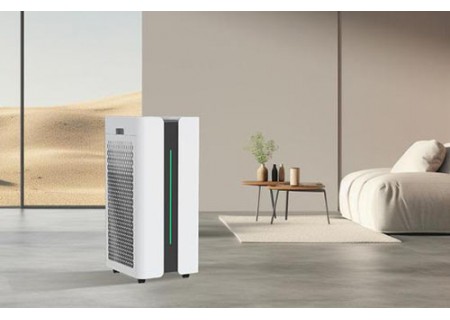Stationary combustible toxic gas monitor

The presence of combustible and toxic gases in industrial production, home use and many other situations can pose a serious threat to our lives. In order to detect and prevent potential dangers in a timely manner, combustible and toxic gas detectors have become indispensable safety equipment. Let's take a look at how fixed combustible toxic gas monitors work, the application scenarios, and how to properly install and use these devices.
Working principle of the stationary combustible toxic gas monitor
Stationary combustible toxic gas monitors detect gas concentrations in the air by means of built-in sensors. These sensors usually use the principles of catalytic combustion, electrochemistry or photoionization to detect the gas. When the sensor detects that the gas concentration exceeds a preset safety threshold, the detector will emit an audible and visual alarm to alert people to take emergency measures.
Application Scenarios of Fixed Combustible Toxic Gas Monitor
1. Industrial production: In the production process of petrochemical, pharmaceutical, paint and coating, etc., combustible or toxic gases may be generated. Installation of fixed combustible toxic gas monitor can detect gas leakage in time and prevent fire or poisoning accidents.
2. Family use: Family gas water heaters, gas stoves and other equipment in the use of the process, if the gas leakage, may lead to carbon monoxide poisoning or fire. Installation of combustible and toxic gas detectors can detect gas leakage in time to protect the lives of family members.
3. Public places: Schools, hospitals, shopping malls and other public places are densely populated, once the gas leakage occurs, the consequences will be serious. Installation of combustible and toxic gas detectors can detect gas leaks in time and ensure the safe evacuation of people.
How to install and use fixed combustible toxic gas monitor correctly
1. Installation location: Fixed combustible toxic gas monitor should be installed in the area where the gas may leak, such as near the gas pipe, around the gas equipment, etc. Meanwhile, it should be avoided to be installed near the vent, doors and windows which are easy to be disturbed by the gas flow. At the same time, it should be avoided to be installed near vents, doors and windows, and other locations that are easily disturbed by airflow.
2. Regular Inspection: Regularly inspect the combustible and toxic gas detector to ensure that the equipment operates normally. If the equipment is found to be faulty or false alarms, it should be repaired or replaced in time by contacting professionals.
3. Precautions for use: When using the combustible and toxic gas detector, care should be taken to avoid collision and falling so as not to affect the performance of the equipment. At the same time, you should avoid using open flame or static electricity generating items near the device, so as not to cause false alarms or fire.
Fixed combustible toxic gas monitors play an important role in protecting people's lives. By understanding the working principle, application scenarios, as well as the proper installation and usage of these devices, we can better utilize them to prevent potential dangers.








-450x320.jpg)
-450x320.jpg)
-450x320.jpg)
-450x320.jpg)